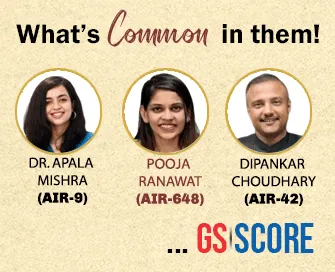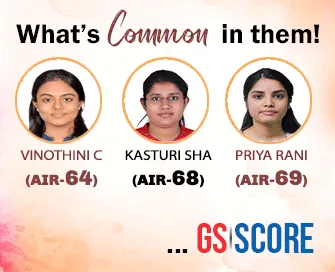

30th November 2024 (10 Topics)
Mains Issues
Context
Nepal's Prime Minister, K.P. Sharma Oli, is preparing for a visit to China. The key issue during this visit is whether or not he should sign an implementation plan for the Belt and Road Initiative (BRI), a global infrastructure and economic development plan proposed by China. This decision is causing a significant debate in Nepal's ruling coalition.
BRI in Nepal:
- Nepal joined the BRI in 2017, proposing 35 projects under the initiative, but this was later reduced to just nine. However, none of these projects have begun yet, and the funding details remain unclear.
- The Pokhara International Airport, built with Chinese funds, is one such project but is underused, with no international flights. There are concerns that it might become a "white elephant," a project with high costs but little benefit.
- What’s at Stake:
- Nepal views the BRI mainly as loan assistance for infrastructure development. However, China sees it as a broader diplomatic strategy to enhance its global influence and economic ties with countries like Nepal.
- The Chinese ambassador to Nepal, Chen Song, has been active in pushing for the BRI, even labeling ongoing projects like the Pokhara Airport as part of the BRI, which is controversial because the airport began before Nepal signed the agreement.
Oli's Geopolitical Balancing Act:
- India’s Concerns: India is wary of China's growing influence in Nepal, especially since Nepal's relationship with India has become strained, particularly after the 2015 border blockade and the controversial 2020 map dispute over the Kalapani region.
- India has traditionally been Nepal’s key partner in trade and development. But Oli’s push for closer ties with China has raised concerns in India. Some believe that Nepal’s alignment with China through the BRI could upset the region’s balance of power.
- The S. is also concerned about the growing Chinese footprint in Nepal, as seen when China criticized a U.S.-funded $500 million grant to Nepal.
Fact Box:What is Belt and Road Initiative (BRI)?
India’s Concerns wrt BRI:
|


Mains Issues
Context
The civil war in Syria, which had faded from global attention, has escalated once again. Syrian rebel forces launched a major offensive on Aleppo, a key city in northern Syria. This surge in violence threatens to destabilize the region even more.
Why is there crisis in Syria?
- The conflict in Syriadates back to 2011. Many people were unhappy about the high levels of unemployment, widespread corruption and lack of political freedom.
- Inspired by the ‘Arab spring’ uprisings in Tunisia and Egypt, peaceful protests started in March.
- However, the peaceful demonstrations were met by swift government opposition.
- When the government used deadly force to crush the dissent, protests erupted nationwide. The violence rapidly escalated, eventually giving way to a brutal war.
- Now, the crisis is extending into its fourteenth year – with more people than ever sliding into deeper poverty and 16.7 million people in need of humanitarian assistance and protection.
- The Syria situation remains one of the largest displacement crises in the world, with a 2025 projection of 7.2 million internally displaced people(IDPs), and 6.2 million refugees, primarily hosted in the neighbouring countries of Egypt, Iraq, Jordan, Lebanon and Türkiye.
Importance of Aleppo:
- Aleppo, roughly 350 km north of the capital Damascus, has been a critical battleground in the Syrian civil war. Before the conflict, it was one of Syria's largest cities, home to 2.3 million people.
- In 2012, rebel forces seized the eastern half of Aleppo, making it a stronghold of the rebellion against President Assad.
- However, the balance shifted in 2016 when Syrian government forces, backed by a brutal Russian aerial campaign, recaptured the city.
- Currently, the roughly 30% of Syria that is not under Assad's control is governed by a mix of opposition factions and foreign troops.
- The United States has about 900 military personnel stationed in northeastern Syria.
- The siege of Aleppo became symbolic, marked by indiscriminate bombings, starvation tactics, and massive displacement.
Regional Implications:
- The significance of the fighting in Aleppo cannot be understated as it can turn around the power structure in conflict-hit Syria where President Bashar Assad has managed to steer away the opposition forces seeking his ouster for more than a decade.
- The timing of this offensive is crucial as Iran, Hezbollah, and Hamas are already involved in other conflicts, including in Lebanon and Gaza. These ongoing wars are draining their resources.
- Russia, which supports Assad in Syria, is distracted by its war in Ukraine, limiting its ability to provide full support to the Syrian regime.
- This offensive marks a significant shift in the Syrian civil war, with the potential to reignite conflict and further destabilize the region.


Mains Issues
Context
During the National Seed Congress (NSC), experts, scientists, and industry partners came together to highlight the need to revise and modernize the Seeds Bill of 2004 and the Seeds Policy of 2002. They called for these policies to reflect the current challenges and advances in the seed industry, as well as to address farmers' concerns more effectively.
India’s Seed Industry
- Seed is the most important and vital input for agricultural production.
- In fact, it is the most cost efficient means of increasing agricultural production and productivity.
- Seeds Efficacy of other agricultural inputs in enhancing productivity and production, such as fertilizers, pesticides and irrigation is largely determined by the quality of seed.
- The Indian seed industry’s foundation was established in the 1960s and subsequent policies in the late 1980s, including the New Seed Development Policy (1988-1989), transformed the industry and provided Indian farmers access to superior seed and planting materials.
- In 2022, the Indian seed market was valued at $6.3 billion, projected to reach $12.7 billion by 2028, with a CAGR of 12.43 per cent.
- Focus area for the sector: Pest and disease-resistant seeds, drought and heat-tolerant varieties, and more nutritious options to address the challenges of climate change and enhance nutritional value.
- Technological Advancement made in Seed Industry:
- Genetic advancement - Seed technology used today combines genetic advancement with applied technologies to provide quality-enhanced seeds with the ability to withstand a range of biotic and abiotic stressors.
- Priming and enhancement technologies- Priming and enhancement technologies are emerging as an essential package of practices to ensure that seeds perform well under a wide range of growing conditions.
- Film coating technology- Film coating technology is applied to organic and inorganic cultivation to improve seed handling, precision planting and use as carriers of pesticides and nutrients.
Issues in the Seed sector
There are several roadblocks to the growth of India’s seed sector:
- Outdated laws and conflict between Central and State regulations make it difficult to implement policies effectively.
- Poor availability of quality seeds, especially for smallholder farmers, and high dependency on informal seed systems are major challenges.
- Conflicts over proprietary technologies (like genetically modified seeds) and farmers’ rights were also mentioned, as well as disagreements over royalties and technology-sharing agreements between private companies and farmers.
- The sector’s reliance on imported germplasm (genetic material for creating hybrid seeds) is also a concern, as it prevents self-sufficiency.
- There is a lack of investment in seed research and development to develop better varieties suited for local conditions.
- Climate Change: Heatwaves caused a 4.5 per cent decrease in wheat yield across India, with some areas experiencing up to a 15 per cent drop in April 2022 due to an unprecedented rise in temperatures in the month.
- The combination of water scarcity, heatwaves, frequent droughts, and unpredictable monsoons presents a significant challenge to India’s agricultural productivity.
- These challenges underscore the urgent need to prioritise the development of drought-resistant crop varieties.
Suggestions for Reform:
- The government should focus on improving farmer education on the importance of good quality seeds.
- There is need for strengthening seed cooperatives to help empower smallholder farmers and make high-quality seeds more accessible.
- The seed certification system should be made more transparent and in line with global standards to ensure better seed quality.
Fact Box:Types of seed:
Key Schemes/Acts Central Sector Scheme “Development and Strengthening of Infrastructure Facilities for Production and Distribution of Quality Seeds”:
Protection of Plant Varieties and Farmer’s Rights Act, 2001
|


Prelims Articles
Context
India’s GDP growth has sharply slowed from 8.1% to 5.4% in the second quarter of FY25, according to government data released recently. This marks a significant drop from the previous quarter and aligns with predictions from various economists.
Key Reasons for Slowdown:
- Weaker Consumption:
- Food Inflation: Retail food inflation surged to 87% in October, which reduced the purchasing power of consumers.
- Urban Private Consumption: Higher food prices, stagnating wages, and higher borrowing costs dampened urban demand.
- Adverse Weather Impact: The mining and electricity sectors faced disruptions due to adverse weather conditions, further slowing down growth. Although agriculture saw 5% growth, the sector's performance had been weaker in the previous quarters.
- Weaker Corporate Earnings: Corporate earnings in the July-September quarter were weak, with Indian companies reporting their worst performance in four years, contributing to the overall economic slowdown.
- Global Economic Factors: Reduced global demand and slow recovery from previous disruptions also contributed to the slowdown.
- The slowdown in India’s economic growth highlights challenges like high inflation, low consumption, and sector-specific disruptions
Sectoral Performance:
- Manufacturing: Growth in the manufacturing sector slowed to 2%. The Mining & Quarrying sector even saw a negative growth of -0.1% due to the disruptions caused by the rains.
- Agriculture: The Agriculture and Allied sectors bounced back with a 5% growth, after lower growth in the previous quarters.
- Tertiary Sector: This sector, which includes services like trade, communication, and tourism, grew by 1% in Q2 of FY 2024-25, up from 6.0% in the same period last year. Specific sectors like trade, hotels, transport, communication, and broadcasting services grew by 6.0%.
- Construction: This sector grew by 7% in Q2 and 9.1% in the first half (H1) of FY25, supported by strong domestic demand for finished steel.
Fact Box: Gross Domestic Product (GDP)
|


Prelims Articles
Context
Tamil Nadu State Government has requested the Centre to cancel the tungsten mining rights awarded to a private company in Madurai district, considering the biodiversity heritage site in the proposed area.
About the region
- The Nayakkarpatti tungsten block comprises six villages, including Arittapatti in Madurai, which is a notified biodiversity heritage site.
- Hillocks in Arittapatti village have rich biological significance with the presence of around 250 bird species, including 3 flagship Raptor species – Laggar Falcon (Falco jugger), Shaheen Falcon (Falco peregrines), and Bonelli's Eagle (Aquila fasciata).
- It is also famous for archaeological monuments, including cave temples, sculptures, Jain symbols, Tamil Brahmi scripts, and Pancha Pandavar stone beds.
- Any mining activity will cause irreparable damage to these sites.
About Tungsten
|


Prelims Articles
Context
The ongoing global negotiations in Busan, South Korea, for a treaty to combat plastic pollution are being led by the Intergovernmental Negotiating Committee (INC-5). The chair released a draft document with a key focus to create the world’s first set of global rules to reduce plastic pollution.
The Draft Document:
- The chair released a draft document outlining two key options for plastic production cuts, a highly contentious issue in the negotiations. These options are:
- Option 1: No target to reduce plastic production. This option does not include any provisions or targets aimed at cutting the production of plastic.
- Option 2: Setting global targets to reduce plastic production. This option includes provisions to curb plastic production, which was proposed by Panama.
- The debate over production cuts has been a major point of contention among countries, with several nations opposing it.
- India has not supported the proposal to cut plastic production. Countries like Saudi Arabia, Iran, and Russia have strongly opposed production cuts, with Saudi Arabia calling it a "red-line issue".
Fact Box:Plastic Pollution
Major initiatives to end plastic pollution
|


Prelims Articles
Context
The Indian Space Research Organisation (ISRO) has successfully completed the Initial Phase of Training for the Gaganyatris (astronauts) in collaboration with NASA as part of the joint ISRO-NASA mission to the International Space Station (ISS). This marks a significant step toward India's maiden crewed space mission, the Gaganyaan mission.
About the Gaganyaan Mission
- The Gaganyaan mission, meaning 'celestial vehicle', will send astronauts into Low Earth Orbit (LEO) about 400 km above Earth. The mission will last three days, with the spacecraft returning safely to Earth and landing in the Indian Ocean.
- The primary goal is to demonstrate India’s ability to launch and bring back astronauts safely to Earth.
- Astronauts: The first batch of astronauts (referred to as Gaganyatris) are four Indian Air Force (IAF) pilots: Group Captains Prashanth Balakrishnan Nair, Ajit Krishnan, Angad Pratap, and Wing Commander Subhanshu Shukla.
- Launch Vehicle: The mission will use the Launch Vehicle Mark-3 (LVM3), India’s heaviest and most powerful rocket, to carry the crew into space.
- Mission Phases: The mission will include four test flights, including two uncrewed flights and one with a humanoid robot to test systems before the final crewed flight.
- TV-D1 (October 2023): The first test successfully demonstrated the crew escape system in case of a malfunction.
- TV-D2 (2024): The second test will focus on testing orbital modules and re-entry technologies.
Significance of the Gaganyaan Mission
- Advancing Scientific and Technological Expertise: The mission will provide data on microgravity, radiation, and human physiology, advancing India’s knowledge in these areas, which can have broader scientific and health applications.
- Inspiring the Next Generation: It will inspire young Indians to pursue careers in STEM fields (science, technology, engineering, and mathematics), contributing to long-term educational growth and innovation.
- Global Space Cooperation and Prestige: The mission showcases India’s capability to participate in international space projects, including collaborations with the International Space Station (ISS), Artemis Program, and Lunar Gateway. It also raises India’s global prestige as a space-faring nation.
- Social and Economic Impact: The mission is expected to generate economic benefits through job creation and innovations in sectors like education, healthcare, agriculture, disaster management, and environmental protection.
Fact Box:India’s Growing Space Power
|


Editorials
Context
India’s journey towards economic transformation has heavily relied on expanding financial inclusion, which is crucial for sustainable growth and poverty alleviation. Initiatives like Pradhan Mantri Jan Dhan Yojana (PMJDY) and the growth of the Unified Payments Interface (UPI) have been pivotal in this process. Despite these strides, significant gaps persist, especially in financial literacy, infrastructure, and consistent engagement, highlighting the need for further innovation and targeted interventions to ensure broader financial inclusion across the nation.
Key Initiatives and Progress
- Pradhan Mantri Jan Dhan Yojana (PMJDY): PMJDY has provided millions of Indians, particularly from low-income groups and rural areas, with access to basic banking services. The scheme has led to a significant increase in the number of bank accounts and RuPay cards, signaling a key step in the financial inclusion process.
- Growth of Unified Payments Interface (UPI): UPI has revolutionized digital payments in India, making it easier for people to conduct transactions seamlessly. The growth of UPI is a major leap in making financial services more accessible, especially for the tech-savvy and urban population.
- Impressive Outcomes: Key indicators such as the rise in bank branches, ATMs, deposit accounts, and credit cards demonstrate substantial progress in financial inclusion. However, while access has improved, actual usage and engagement with these services remain a challenge.
Challenges and Gaps in Financial Inclusion
- Financial Literacy Deficit: Only 27% of Indians have basic financial literacy, with significant regional disparities. States like Goa and Delhi show higher literacy, while others, such as Odisha and Chhattisgarh, lag behind, limiting the effectiveness of financial inclusion efforts.
- Infrastructure and Digital Divide: Rural areas continue to face infrastructural deficits, both in terms of physical banking outlets and digital literacy. Only 25% of rural households have digital literacy, compared to 61% of urban households, impeding engagement with modern financial systems.
- Engagement vs. Access: While financial access has expanded, 20% of PMJDY accounts remain dormant. This reflects a gap between access and sustained engagement, with many beneficiaries not actively using the available services, underscoring the need for behavior change campaigns and personalized advisory services.
Policy Recommendations and the Way Forward
- Enhancing Financial Literacy and Education: To bridge the knowledge gap, targeted campaigns and grassroots financial literacy programs should focus on women, youth, and rural populations, empowering them to make informed financial decisions and engage meaningfully with financial services.
- Tailoring Financial Products for Low-Income Groups: Financial institutions need to develop affordable products suited to the needs of low-income households, such as micro-insurance, low-fee savings accounts, and simplified loan products, to increase accessibility and engagement.
- Government’s Role and Infrastructure Development: Continued government efforts through initiatives like the National Strategy for Financial Inclusion (2019-2024) and the National Centre for Financial Education (NCFE) must be supported with improved physical infrastructure and digital connectivity to address the rural-urban divide and foster inclusive economic growth.
Practice Question:
Q. Financial inclusion plays a critical role in India’s economic transformation by driving growth and poverty alleviation. Critically analyze the progress made in expanding financial inclusion in India, identify key challenges, and suggest measures to enhance its effectiveness, particularly for marginalized groups.


Editorials
Context
The Supreme Court of India recently reaffirmed the constitutional principles of ‘secularism’ and ‘socialism’ in the Preamble of the Constitution, rejecting attempts to challenge their inclusion. The issue arose from petitions questioning the characterisation of India as secular and socialist, with opposition particularly from sections of the right-wing. This decision comes amid ongoing debates over the interpretation of these terms in India’s governance.
Background and Constitutional Interpretation
- Secularism as a Basic Feature: The Supreme Court's ruling in the R. Bommai (1994) case established that secularism is a basic feature of the Constitution. It emphasized that the Constitution guarantees equality before the law and freedom of religion, ensuring that the state does not favour any religion nor hinder the practice of any faith. This reflects India’s unique interpretation of secularism, where religious neutrality is maintained.
- Opposition to 'Socialist' in the Preamble: The term 'socialist' was controversially added to the Preamble through the 42nd Amendment during the Emergency in 1976, despite opposition from Dr. B.R. Ambedkar during the drafting of the Constitution. However, the inclusion has not impeded India’s economic policies, which allow for market competition and economic liberalization.
- The Court's Stance on Amendments: The Court upheld that the inclusion of ‘secular’ and ‘socialist’ in the Preamble, despite being introduced during the Emergency, was a valid constitutional amendment. It noted that these terms were debated in Parliament during the 44th Amendment Act in 1978, indicating that the amendment process was not carried out in haste or without legislative scrutiny.
Court’s Rationale and Explanation
- Secularism in Practice: The Supreme Court clarified that India’s version of secularism, as per the Constitution, involves treating all faiths equally without discrimination. It assured that the state is neither supportive of any religion nor penalizes individuals for their religious practices, which reflects the nation’s inclusive and pluralistic ethos.
- Socialism and Economic Justice: The Court explained that ‘socialism’ in the Preamble is linked to the principle of economic and social justice, ensuring that no citizen is disadvantaged by economic or social conditions. This interpretation aligns with the Constitution’s vision of a welfare state where the government plays a role in reducing disparities.
- No Hindrance to Economic Liberalization: The inclusion of ‘socialism’ in the Preamble has not prevented the adoption of economic reforms or market liberalization. The Court noted that the term represents a commitment to justice and equity rather than an obstacle to economic growth, and that India has evolved its own model of socialism that supports market competition.
Implications and Relevance
- Affirmation of Fundamental Constitutional Values: The Supreme Court’s verdict reaffirms the core values of secularism and socialism as integral to India’s democratic fabric. As the Constitution marks 75 years, this decision serves as a timely reminder of the foundational principles enshrined in the Preamble, which continue to guide India’s governance and legal interpretation.
- Political and Legal Clarity: The ruling brings legal clarity to the political discourse surrounding the Preamble, particularly in the face of ongoing attempts to alter its characterisation. It underscores that secularism and socialism, as defined within the Indian context, are not static or rigid but dynamic principles that evolve with the nation’s needs.
- Strengthening Constitutional Morality: The Court's ruling strengthens the notion of constitutional morality by upholding the original intent behind the inclusion of ‘secular’ and ‘socialist.’ It ensures that these terms continue to define India’s commitment to equality, justice, and pluralism, regardless of political changes or pressures.
Practice Question:
Q. Critically examine the Supreme Court’s recent verdict upholding the inclusion of the terms ‘secular’ and ‘socialist’ in the Preamble of the Indian Constitution, highlighting its implications for India’s governance and constitutional philosophy.


Editorials
Context
The Union Cabinet approved the “One Nation, One Subscription” (ONOS) plan on November 25, which aims to make expensive research journals more accessible to scholars and publicly funded research institutions. The ONOS initiative was first proposed in the 2020 draft of India’s National Science, Technology, and Innovation Policy, as a response to the increasing fees charged by academic publishers for access to scholarly articles. However, the plan has raised concerns about the ongoing dominance of commercial publishers and the potential lack of meaningful reform in access models.
Key Features and Positive Aspects of ONOS
- Centralization of Subscription Access: ONOS centralizes the subscription process for research journals by replacing individual institutional consortia with a single government-managed subscription. This aims to provide affordable access to expensive academic journals, making them available at underfunded government institutes that previously struggled with high subscription fees.
- Publicly Funded Institutes Benefiting: ONOS will primarily benefit publicly funded institutions, ensuring that researchers from government-backed institutes can access research papers without facing financial barriers. This policy is seen as an effort to democratize access to knowledge by reducing the burden on scholars in these institutions.
- Cost Reduction for Government Institutes: With ONOS, a substantial amount of money (?6,000 crore) will be allocated to securing access to 30 major publishers. This is expected to alleviate the financial strain on research institutions, making high-quality, peer-reviewed research more accessible to scholars working on limited budgets.
Criticisms and Limitations of ONOS
- Persistence of Commercial Publishers’ Dominance: While ONOS may reduce costs for access, it fails to challenge the hegemony of commercial publishers, many of whom profit from publicly funded research. The model does not promote alternatives like open-access or support home-grown scholarly journals, which would allow India to exert more control over the dissemination of research.
- Lack of Support for Open-Access Models: Critics argue that the government missed an opportunity to promote “green” or “diamond” open-access models, which ensure public access to research by default, rather than continuing to channel significant sums of money into foreign publishers. Such models would align with the global movement toward making research universally accessible without paywalls.
- Limited Scope and Transparency Issues: ONOS will be limited to publicly funded institutions, and its implementation lacks clarity on monitoring journal quality. There are concerns over the lack of consultation with research institutes on their specific needs and whether journals with questionable academic standards or those that have become irrelevant will be included or excluded from the list.
Implications and Recommendations for the Future
- Missed Opportunity to Influence Global Research Accessibility: India has the potential to influence research accessibility in the developing world, yet ONOS primarily benefits foreign publishers. By supporting the open-access movement and encouraging domestic publishing models, India could have created a more equitable system for scholarly communication.
- Government’s Justification for ONOS: With the rise of "gold" open-access journals (where researchers pay to publish and articles are freely available), the continued reliance on subscription-based models under ONOS raises questions about the government’s justification for not adopting more progressive access strategies that would better align with current global trends.
- Need for Comprehensive Consultation and Reform: ONOS should have been preceded by consultations with research institutions to tailor the policy to their specific needs. Going forward, the government should consider more holistic reforms that go beyond centralized subscription and address long-term issues in research accessibility, including the promotion of alternative access models and support for domestic research infrastructure.
Practice Question:
Q. Critically examine the 'One Nation, One Subscription' (ONOS) plan approved by the Union Cabinet, highlighting its benefits, limitations, and the potential alternative strategies for enhancing access to scholarly research in India.



